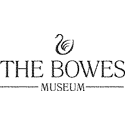(b Florence, c.1449; d Florence, 11 Jan. 1494). Florentine painter. According to Vasari he trained with Baldovinetti and it has been suggested that he also spent some time in Verrocchio's workshop. His style was solid, prosaic, and rather old-fashioned (especially when compared with that of his great contemporary Botticelli), but he was an excellent craftsman and good businessman and had one of the most prosperous workshops in Florence. In this he was assisted by his younger brother Davide (1452–1525); another brother, Benedetto (c.1458–97), seems to have spent much of his career in France. Domenico's largest undertaking was the fresco cycle in the choir of S. Maria Novella, Florence, illustrating scenes from the lives of the Virgin and St John the Baptist (1485–90).
Read more
This was commissioned by Giovanni Tornabuoni, a partner in the Medici bank, and Ghirlandaio depicts the sacred story as if it had taken place in the home of a wealthy Florentine burgher. It is this talent for portraying the life and manners of his time (he often included portraits in his religious works) that has made Ghirlandaio popular with many visitors to Florence. But he also had considerable skill in the management of complex compositions and a certain grandeur of conception that sometimes hints at the High Renaissance. Ghirlandaio worked on frescos in Pisa, San Gimignano, and Rome (in the Sistine Chapel) as well as in Florence, and his studio produced numerous altarpieces. He also painted portraits, the finest of which is Old Man and a Boy (c.1485, Louvre, Paris); it depicts the man's diseased features with ruthless realism, but has a remarkable air of tenderness. Ghirlandaio's son Ridolfo (1483–1561) was a friend of Raphael and a portrait painter of some distinction. He probably had his initial training from his father, but Domenico's most famous pupil was Michelangelo.
Text source: The Oxford Dictionary of Art and Artists (Oxford University Press)











